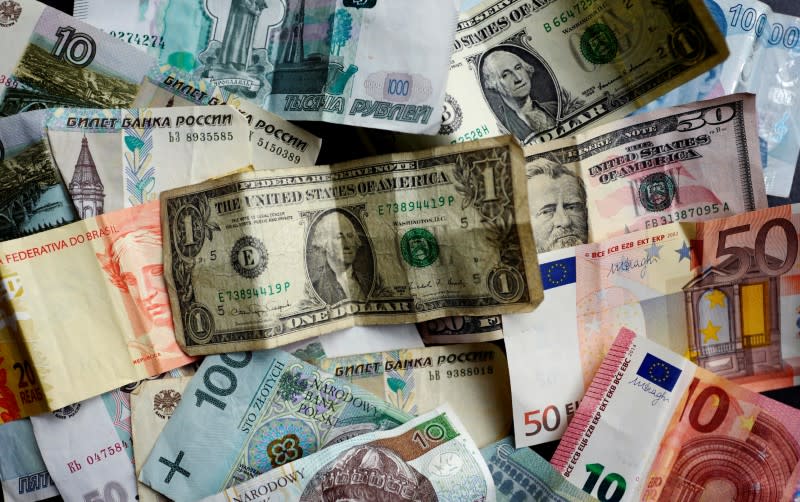Two reasons why the dollar keeps tumbling

Donald Trump has continued to tout the surging stock market (^GSPC), which continues to flirt with new highs each day, ever since he took office. But over that same period, the US Dollar has continued a steep downtrend. Economists say there are two key reasons behind the plummeting dollar: Trump and the Fed.
Donald Trump hasn’t delivered
Following Trump’s inauguration, there were high hopes for fiscal action in the US, Societe Generale analysts said, which would give the economy a boost.
As shown in the chart below, the dollar rose significantly following Trump’s November 2016 election in anticipation of progress on items like infrastructure reform and tax reform.
But with increasing signs of discord, expectations have lessened and the dollar has sold off, as can be seen in the move in the currency since the January inauguration and continuing recently as agenda items get pushed off further.

Uncertainty sparked most recently by distractions, a long agenda list for Congress, and confusion around the future of key players behind the proposals like economic adviser Gary Cohn have added to existing question marks.
The Federal Reserve
And some of the uncertainty and delays surrounding the Trump agenda could be contributing to the recent slower pace of rate hikes at the Fed, according to Societe Generale.
To put this in context, the dollar had a strong run for six years, as shown below. This was largely driven by strong economic performance in the US following the 2008 recession but then propelled significantly higher in 2015 when the US became the first central bank to talk about tightening (raise rates).

However, since then, two things have happened.
First, the pace of tightening in the US has been slower than originally anticipated. At the time of the first rate hike in the US in December 2015, the Fed projected four hikes in 2016. We ended up getting just one. In December 2016, it projected three hikes in 2017. We have gotten only two with now minimal expectations for another before the end of the year.
Second, other central banks have gotten more aggressive about tightening policy.
“The rest of the world hasn’t been standing still,” according to Societe Generale’s Kit Juckes.
In fact, the Bank of Canada has hiked rates twice this year, the European Central Bank (ECB) has communicated its intent to wind down asset purchases, and the Bank of England has also started to talk about rate hikes soon.
In other words, the policy divergence (US in tightening mode while rest of the world not) that was supporting the dollar through the first quarter of this year has ended.
“After growing at a modest rate of 2.1% in 2012-16, we expect the US economy to slow to 1.7% over 2017-21. That may be better than the average of the developed economies…but it’s not enough to get us excited about the currency,” Juckes wrote. “President Trump’s political honeymoon is well and truly over, the current account deficit is growing again, and higher rates elsewhere will increasingly compete for global capital flows.”
The bottom line: While the stock market is surging, the chart of the dollar is telling a very different story. And it comes back to expectations for the Fed and Donald Trump.
Nicole Sinclair is markets correspondent at Yahoo Finance
Please also see:
Expert: Breached Equifax data may have been used in fraud
15% of big US chain restaurant locations were in hurricane-exposed areas
How Apple can prevent the iPhone from going the way of the PC
DACA repeal will conservatively hit GDP by $105 billion over five years, Mark Zandi says

 Yahoo Finance
Yahoo Finance 
